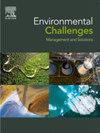泰国曼谷城市公园细颗粒物(PM2.5)的化学成分和氧化电位:对公众健康的影响
Q2 Environmental Science
引用次数: 0
摘要
PM2.5会造成严重的健康风险,恶化呼吸系统和心血管疾病,增加慢性病风险。天气条件和排放源影响它们的组成。于2024年1月30日至2月8日在曼谷Lumphini和thonburifrom公园采集PM2.5样本,并使用二硫代苏糖醇(DTT)法分析其化学成分和氧化电位(OP)。通过相关分析,评估了两个公园PM2.5组分对其OP的贡献。利用富集因子和主成分分析(PCA)对潜在来源进行识别,多元线性回归(MLR)分析对潜在来源的贡献进行量化。此外,该研究还调查了与重金属有关的癌症和非癌症风险。蓝毗尼公园的PM2.5平均浓度略高于吞武里隆公园。这两个公园的PM2.5中有机碳(OC)浓度都较高。此外,Thonburirom公园PM2.5的体积归一化OP (DTTv)高于Lumphini公园,这表明吸入PM2.5可能会诱导氧化还原活性和氧化应激。在Lumphini公园,DTTv与OC、元素碳(EC)和金属呈显著相关,而在Thonburirom公园,DTTv与金属和二级有机碳(SOC)呈显著相关。PCA将PM2.5的主要来源确定为混合燃烧源(包括车辆排放和生物质燃烧)、工业排放、二次气溶胶(SA)形成和道路粉尘再悬浮。MLR分析表明,Lumphini公园的PM2.5浓度以混合燃烧源为主,而Thonburirom公园主要受工业排放和SA形成的影响。Cr在两个公园中都显著富集,表明有明显的人为来源。此外,这两个公园的铬含量都超过了可接受的癌症风险阈值1 × 10−6,表明成人和儿童的癌症风险都在增加。本研究首次分析了曼谷城市公园中PM2.5的OP及其潜在来源。两个公园的平均PM2.5浓度均超过世卫组织标准,但仍在污染控制部的阈值之内。值得注意的是,吞武里罗公园的PM2.5 DTT活性高于蓝毗尼公园。进一步的研究需要使用更先进的受体模型来确定PM2.5及其OP来源。此外,重要的是将此类研究扩展到整个东南亚,以支持长期的空气质量监测工作。本文章由计算机程序翻译,如有差异,请以英文原文为准。
Chemical composition and oxidative potential of fine particulate matter (PM2.5) in urban parks of Bangkok, Thailand: Implication for public health
PM2.5 poses serious health risks, worsening respiratory and cardiovascular conditions and increasing chronic disease risk. Weather conditions and emission sources affect their composition. PM2.5 samples are collected from Lumphini and Thonburirom Parks in Bangkok from January 30 to February 8, 2024, and analysed its chemical components and the oxidative potential (OP) using the dithiothreitol (DTT) assay. A correlation analysis was conducted to assess the contributions of PM2.5 components to and its OP in both parks. The enrichment factor and principal component analysis (PCA) were used to identify potential sources, while multiple linear regression (MLR) analysis quantified their contributions. Additionally, the study investigates the cancer and non-cancer risks associated with heavy metals. Lumphini Park has a mean PM2.5 concentration slightly higher than Thonburirom Park. Both parks show a higher concentration of organic carbon (OC) in their PM2.5 levels. Additionally, Thonburirom Park exhibits a higher volume-normalized OP (DTTv) of PM2.5 than Lumphini Park, suggesting that inhaling PM2.5 may induce redox activity and oxidative stress. In Lumphini Park, DTTv strongly correlate with OC, elemental carbon (EC), and metals, while in Thonburirom Park, it correlates with metals and secondary organic carbon (SOC). PCA identifies primary sources of PM2.5 as mixed combustion sources (including vehicle emissions and biomass burning), industrial emissions, secondary aerosol (SA) formation, and road dust resuspension. The MLR analysis indicates that mixed combustion sources dominate PM2.5 concentration in Lumphini Park, while Thonburirom Park is primarily affected by industrial emissions and SA formation. Cr is notably enriched in both parks, indicating significant anthropogenic sources. Furthermore, both parks exceed the acceptable cancer risk threshold of 1 × 10−6 for Cr, indicating an increased cancer risk for adults and children. This study presents the first-ever analysis of OP of PM2.5 and its potential sources in urban parks of Bangkok. Average PM2.5 concentration in both parks exceed WHO standards but remain within Pollution Control Department (PCD) thresholds. Notably, the DTT activity of PM2.5 is higher in Thonburirom Park than in Lumphini Park. Further studies are required to identify PM2.5 and its OP sources using more advance receptor models. Additionally, it is important to extend such studies across Southeast Asia to support long-term air quality monitoring efforts.
求助全文
通过发布文献求助,成功后即可免费获取论文全文。
去求助
来源期刊

Environmental Challenges
Environmental Science-Environmental Engineering
CiteScore
8.00
自引率
0.00%
发文量
249
审稿时长
8 weeks
 求助内容:
求助内容: 应助结果提醒方式:
应助结果提醒方式:


